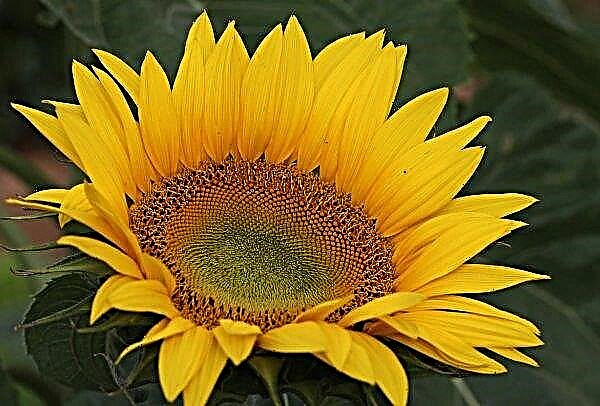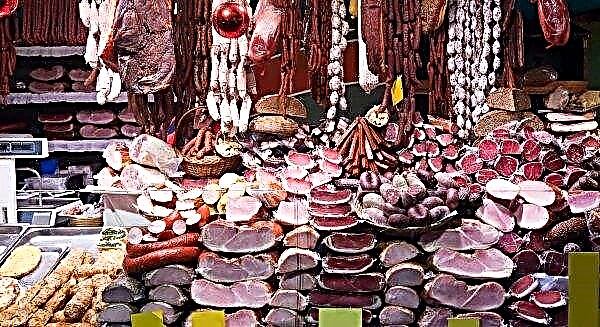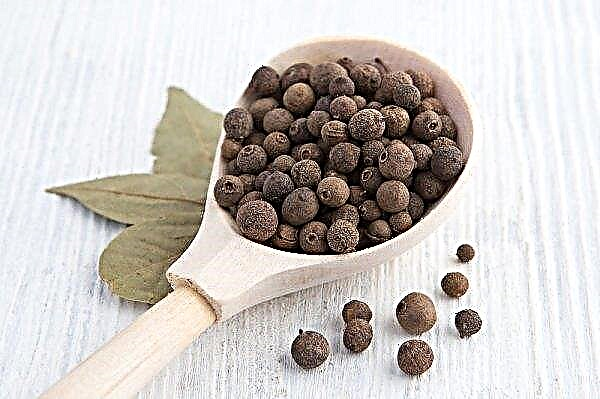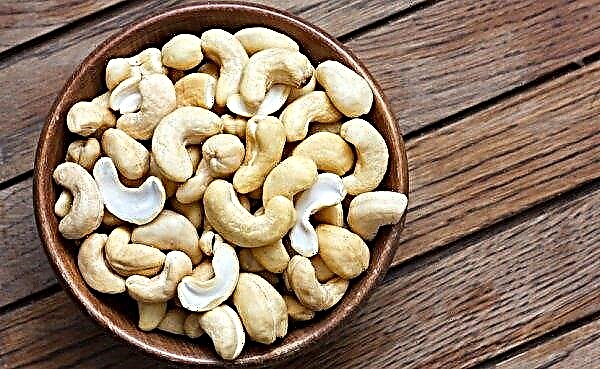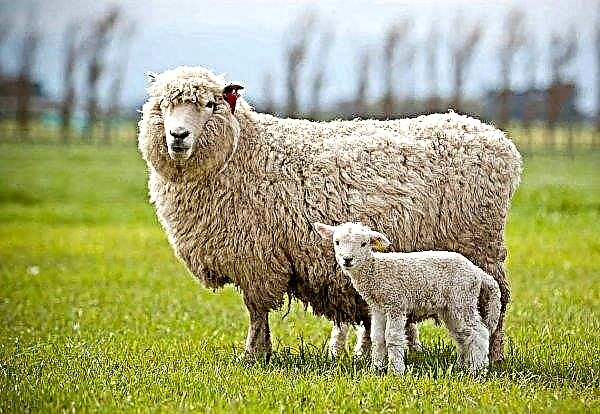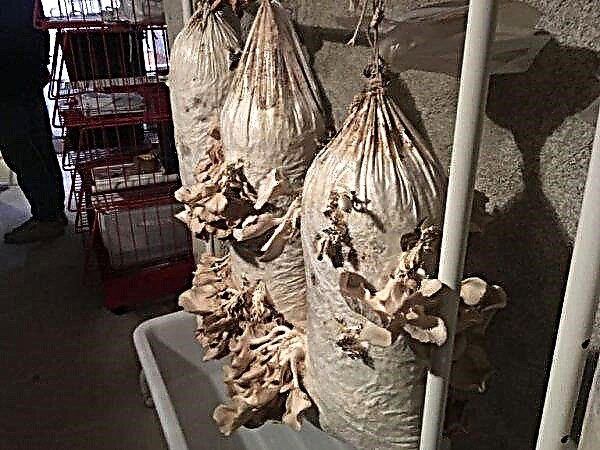Amager cabbage is time-tested and meets all expectations. He enjoys the deserved love of vegetable growers and consumers. If all the rules of cultivation are observed, even an inexperienced gardener can get a plentiful harvest. We will talk about the merits of the variety and cultivation methods in this material.
Variety selection and description
A long way from the beginning of the selection of Amager cabbage to the consumer was a success. Included in the State Register of the Russian Federation back in 1943, the late-ripening white cabbage variety has not lost popularity so far. Recommended for cultivation in almost all regions except the northern regions, where the variety does not have time to ripen.
The designation Amager and Amager 611 are both correct and correspond to the declared variety. At the beginning of breeding, the name of the variety included numbers, but then when collecting seeds in the southern regions varietal changes occurred, resistance to drought and increased daytime temperatures appeared. And the new sub-grade was called without numbers.

The Amager variety belongs to late-ripening varieties with a growing season of about 120-150 days. During ripening, the amount of solids and sugars, as well as vitamin C, significantly increases. The fruit is a heavy, firm head of cabbage weighing up to 2–4 kg.
The leaves are smooth, greenish, with a waxy coating. During the harvest, heads of cabbage are rough and bitter in taste, but over time, the taste changes for the better and becomes saturated and sweet. With proper agricultural technology from 1 m² you can get up to 7 kg of vegetables. Resistance to cracking allows to increase the shelf life and quality of storage.
Advantages and disadvantages
- Advantages of Amager cabbage are the following qualities:
- the grade is checked by time;
- high and stable productivity;
- heads of cabbage ripen simultaneously, of large size and with a dense structure;
- cold resistance;
- ability to long storage;
- Heads of cabbage keep integrity and do not crack.
Did you know? In Japan, cabbage is grown not only as a vegetable, but also as an ornamental plant of various shapes and colors, it is planted even on flower beds.
- The disadvantages, but rather, the inconvenience of the variety include the following properties:
- requires constant and plentiful watering;
- in the heat stops growth;
- the bitter taste of cabbage at the beginning of the collection;
- affected by black rot (fusarium).
How to grow seedlings on your own
Properly grown and healthy seedlings are the key to a high-quality and plentiful crop.
Optimal timing
Cold-resistant late cabbage can be sown on seedlings from late March (for regions with a short summer) or from mid-April. Sowing is done based on the calculation so that when planting seedlings in the soil it reaches the age of 50–55 days and 4 real leaves are formed on it. With further growth, it will withstand both early cooling and late frosts.

Soil and container for growing
The viability of the seedlings depends on the state of the soil in which they will grow at the initial stage of development. If we take the soil from our own site as the basis, the subsequent planting in the soil will transfer the seedlings less painfully, go faster in growth and more actively form a head out. Soil is best prepared independently from autumn. During the winter, it will freeze, which will relieve pests and diseases.
The substrate is prepared from the following components (4 options to choose from):
- equally garden soil and humus;
- equally peat, turf land, sand;
- equally peat and sand with the addition of two parts of turf;
- sand, humus, peat and land in equal parts.
Sand and peat can be replaced with sawdust by treating them before this boiling water. For every 10 l of the mixture add 25 g of slaked lime. For disinfection, the soil is shed with a weak hot solution of potassium permanganate. You can use ready-made substrates for growing seedlings of vegetable crops with the optimal set of nutrients that are easily absorbed by plants.
Seeds are sown in two ways:
- in a box with soil - continuous sowing with further picking of sprouts in separate containers;
- in separate cups - 2-3 pcs. in each, leaving in the future the strongest sprout.
Seed selection and preparation
It is better to buy seeds in specialized stores where you can get qualified advice and recommendations.
Carefully read the information on the package, which should contain the following data:
- manufacturer, logo and contact details - you can contact in case of complaints or questions;
- photo of a vegetable crop - you can compare with the result of your labor;
- name of the culture and variety - to grow the selected variety;
- the number (weight) of seeds and batch number - you can determine the desired quantity based on the sown area;
- shelf life - expired seeds lose their germination.
Cabbage seeds have good germination (5 g is quite enough for a simple gardener). Purchased seeds do not need to be disinfected, they are completely ready for sowing. Own seeds must be treated with a weak solution of potassium permanganate, "Fitosporin" or aloe juice.
Sowing seeds
Seeds are sown in soil with a distance between holes of 1 cm and 3 cm - between grooves. The depth of seed placement in the soil is 1.5–2 cm.
Seedling Care
When the first sprouts appear, seedlings are transferred to an illuminated and cool place.

The temperature regime for growing seedlings is as follows:
- the first days - +10 ... + 12 ° С;
- 4-6 days after germination - +14 ... + 16 ° С (on cloudy days), + 18 ... + 20 ° С (on sunny days).
Seedlings are watered as the top layer of the earth dries. 2 weeks before planting in the soil, seedlings begin to be hardened, taking out to fresh air first for several hours, and then increase the time of “walking” for the whole day, protecting from freezing.
Important! At temperatures above + 10 ° C, seedlings can stretch out and after transplanting to beds will die.
How and when to plant seedlings in a permanent place
It is advisable not to miss the time of planting seedlings on permanent beds, as overgrown seedlings will not give large heads of cabbage, and they will ripen later. The best time is the presence of the first four leaves.
Optimal timing
Cabbage seedlings can be planted on a permanent bed in the garden in late May or early June, taking into account climatic and weather conditions. The temperature of the soil for planting seedlings should be in the range + 4 ... + 12 ° C. Hot sun can damage immature plants, so the first several days of beds it is advisable to shade with a cloth or burdock leaves.

Site selection
The site for cultivation should be chosen on a flat and well-lit place, carefully dig and loosen the soil to ensure moisture and air permeability. It is necessary to avoid those areas where cabbage, turnips, radishes, and mustard previously grew.
But the desired precursors for cabbage are legumes, root crops and cucumbers. Salads, celery, leeks planted next to cabbage contribute to better development and protection from pests, and dill will also improve its taste. For the prevention of diseases, cabbage plants are not planted in the same area earlier than after 4 years.
Did you know? If marigold is sown among cabbage, then the bed will be Not only look aesthetically pleasing, but you don’t have to treat cabbage leaves with insecticides.
Scheme and depth of landing
Seedling planting pattern: 50-60 cm between the sprouts and 60-70 cm in the aisle. Planting should not be thickened, since these plants are photophilous. Seedlings need to be deepened to the bottom leaves. The soil under the plants should be sprinkled with a crushed mixture of tobacco and ash, which will scare away pests and serve as top dressing.
How to care in the open ground
Care for cabbage in the open ground consists in organizing proper watering, loosening the soil, hilling and timely feeding.
Watering
After planting on beds, young seedlings should be watered every 2 days for 2 weeks. Abundant and regular watering of landings must be provided when heading out (in July-August). Watering is carried out with warm water in the morning or evening hours to avoid sunburn of plants in the midday heat. The use of cold water can provoke a growth retardation and the occurrence of diseases. Water is added exclusively under the root. Drop watering is considered the best.

It allows irrigation at any time of the day with less water and labor. Before harvesting, watering should be minimized as much as possible, and completely stopped a month before harvesting. This will reduce the cracking of the fruit and increase the shelf life of vegetables. During the season, for the prevention of diseases, it is possible to process the crops “Fitosporin” several times, combining with the next watering.
Important! All nitrates are collected in the cabbage stalk, so it must be discarded during processing.
Soil care
The soil under crops needs to be kept clean. To this end, regular weeding and loosening are carried out. Labor costs for weeding and loosening can be reduced using the mulching method. As mulch use straw, sawdust or film. These measures contribute to the development of a powerful root system, which, in turn, leads to an increase in yield and an improvement in the quality of heads of cabbage.
Top dressing
To grow a vegetable weighing 4 kg, the plant needs to provide a large amount of minerals.

Different phases of plant development require different fertilizers:
- after planting in the ground - potash fertilizers and superphosphate (20 g each) with the addition of urea (10 g) per 10 l of water;
- sheet mass building - nitrogen fertilizers;
- heading - phosphorus and potash fertilizers.
When to clean, is it possible to ferment
As soon as the night temperature drops to -2 ° C, this will serve as a signal to harvest. In this case, it is impossible to procrastinate, as the heads of cabbage can freeze, which will negatively affect their storage. Collected heads of cabbage should be sorted into those suitable for long-term storage and those that need to be processed immediately.
For storage, choose a room with good ventilation, where you can provide a temperature within -1 ... + 1 ° С and air humidity at the level of 90–95%. In such conditions, cabbage, having excellent keeping quality, can be stored until April.

To the question whether Amager cabbage is suitable for pickling, one should answer in the affirmative - it fits. It is the late varieties that are ideal for picking, accumulating at the time of harvest the maximum amount of nutrients and vitamins.
Sauerkraut is used as a medicine for food poisoning and dysbiosis and serves as an excellent tool for improving the microflora of the digestive tract. Calorie sauerkraut is only 27 kcal, so it can be included in diets for weight loss.
Amager cabbage is a popular and reliable variety. It is unpretentious when cultivated, has an excellent yield of quality fruits. Seeds of this variety are happy to purchase both large farms and owners of summer cottages.


